8 Reasons Your SEO Isn’t Working and How to Fix Them
Editor’s Note: This post was originally published in December of 2023 and has been updated for accuracy and comprehensiveness.
Your traffic is flat despite months of SEO work. You follow best practices, publish quality content, and build links—yet nothing moves the needle while competitors climb past you in rankings.
The problem isn’t the lack of effort. It’s specific issues that break your SEO without you noticing.
Most struggling SEO campaigns fail for eight common invisible reasons until you know what to look for. In this guide, I will explain the eight common problems and the exact steps to fix them.
1. You downplayed the basics of SEO
One of the many mistakes I’ve noticed, especially among businesses trying SEO for the first time, is ignoring the fundamentals. For SEO to produce long-term results, it has to:
- Be relevant. That is, cater to user search intent, or as Google puts it, be customer-centric. Your SEO campaigns won’t yield results if your website doesn’t provide what users search for.
- Show Authority. This means publishing high-quality, valuable content that solves users’ problems.
- Be user-friendly. Searchers want quick answers to their problems, and your website should help them find what they’re looking for – fast.
What to do:
i. Choose a good domain name
Google said domain names “hardly have an effect” on search performance, but I believe they affect how users perceive your website or brand.
The best domains for SEO are short, memorable, and easy to spell. Also, they have the .com or other default top-level domains (TLDs) (except you’re targeting a local/national audience and need to use country TLDs).
For example, instead of bestfrenchrestaurant.com, use frenchbistro.com or something easy to recall.
ii. Use a reliable web hosting platform:
A good website will perform poorly if hosted on an unreliable hosting provider. Your web host servers determine your website load speed, uptime, and overall performance – all of which directly impact your SEO rankings and user experience.
So, opt for a reliable hosting provider with:
- Fast server response times.
- At least 99.9% uptime guarantee.
- Security features such as DDoS protection, SSL certificates, and automatic backups.
- Quality customer support.
- Scalability to handle traffic growth.
iii. Create a positive user experience:
Quality user experience has always been at the core of Google’s ranking factors. If you want to perform well on search engines and turn visitors into loyal customers, you must put your target audience at the focal point of your SEO campaign.
To do this, ensure your website has an appealing design and loads fast. Adobe studied over 12,000 web users from different countries, and 59% chose a beautifully designed website over a plain one. A good website creates a positive impression in users’ minds and encourages them to explore it further.
iv. Create a logical website structure:
Google should be able to access and navigate your website like an average user. To achieve this, create a clear, logical flow of your web pages, like this:

2. Your website has technical SEO issues
Technical issues like broken links, improper redirects, and poor website structure can affect your website’s performance. Let’s explore the common ones.
i. Robots.txt and sitemap errors:
Robots.txt files tell search engine crawlers which pages to access or ignore on your site. If your robots.txt files disallow search engines from crawling and indexing certain pages on your website, you won’t appear in the search results.
If your pages are not visible on the search results, this may be due to crawlability issues. Log in to Google Search Console and navigate to Coverage >> Index >> Crawl errors:
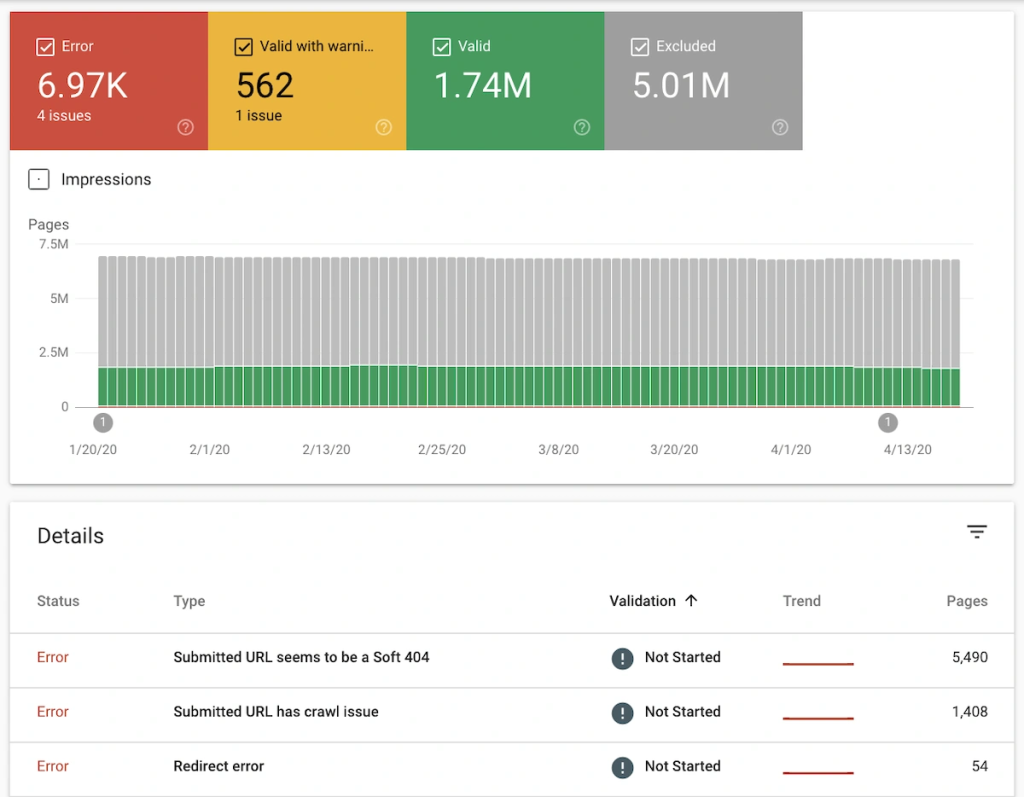
You’ll get a more detailed report on SEMrush:
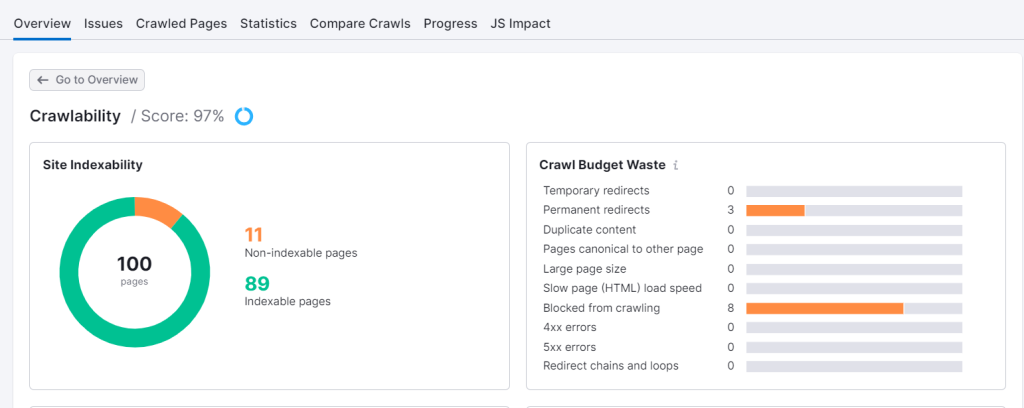
Sitemaps are also helpful in improving your website’s crawlability and indexability. They show search engine bots all the pages you want to index in the search results.
If you don’t have a sitemap, create one using a sitemap generator such as XML Sitemaps. Once your sitemap is generated, submit it to Google via your GSC account:

ii. Mobile-First Indexing:
Next, ensure your website is mobile-friendly. Google uses mobile-first indexing, which means it indexes the mobile version of your site over the desktop version. So, if your site isn’t mobile-optimized, it could affect your search visibility and rankings.
What to do:
Check your site’s mobile-friendliness on GSC under the “mobile usability” report. If your page is mobile-friendly, you’ll get results like this:

If it’s not, read this next point:
iii. Improve website speed
Does your website load quickly? Fast-loading websites are 3x more likely to convert than slow ones. The probability of a visitor leaving your web page increases by 123% as your page speed increases from one to 10 seconds.
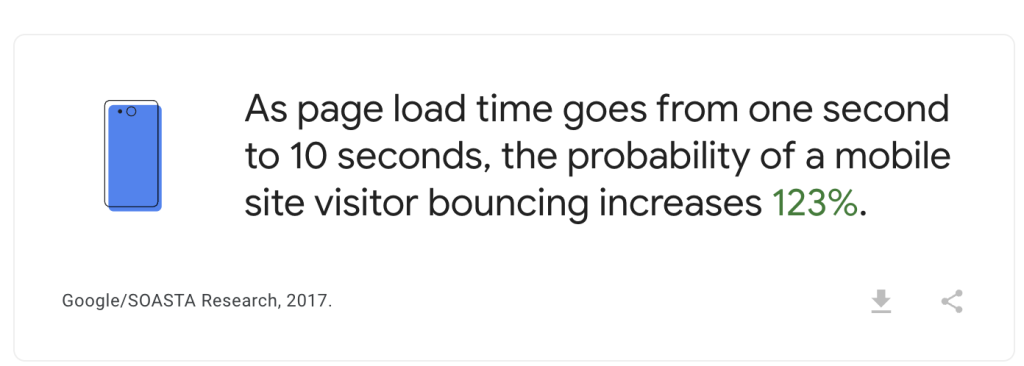
Several issues, such as large images, page size, and excessive HTTP requests, may slow your website’s speed. To solve this, first check your website performance using Google’s PageSpeed Insights:

You’ll see your web performance through Core Web Vitals:
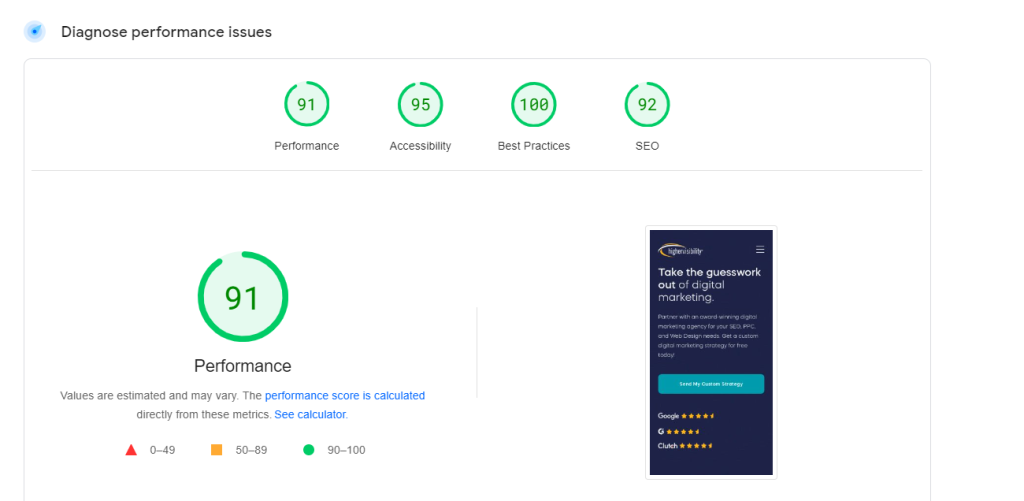
If your website’s performance isn’t up to par:
- Minify all CSS, JavaScript, and HTML files.
- Ensure your website images and videos meet Google’s accepted standards. If your images are too large, compress them using TinyPNG or ImageOptim.
- Use a content delivery network (CDN) to distribute your web content.
- Use browser HTTP caching so that browsers can load recently visited websites more quickly.
iv. Check for security compliance
Web security is one of Google’s top ranking signals:
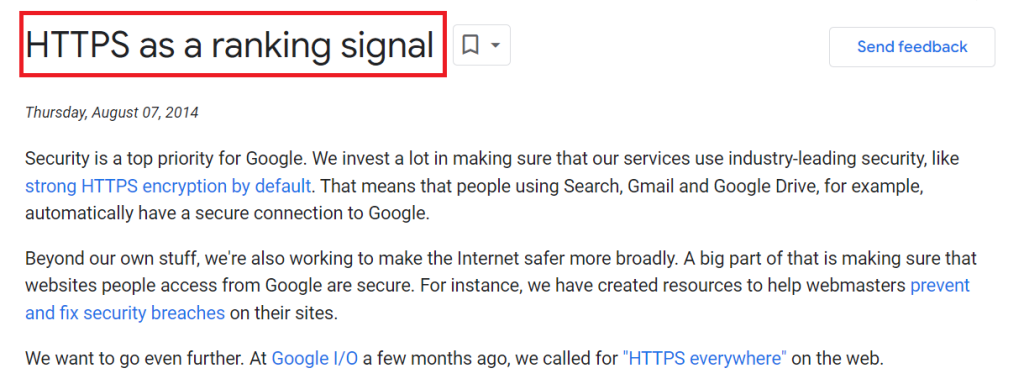
This means sites that use HTTPS will be prioritized on the search results compared to those without. In fact, Google blocks users from visiting insecure sites:
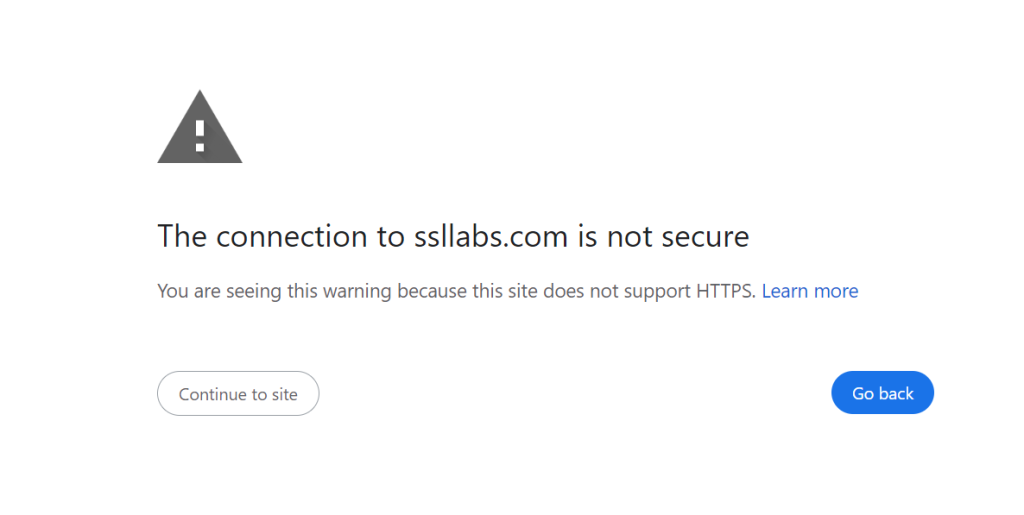

What to do:
If you haven’t already, add an SSL certificate to your site. Most web hosting platforms offer SSL certificates in all their packages, so contact customer support to enable yours.
You can use other security protocols, such as two-factor authentication, DDoS protection, and daily back-ups. Read more on how to improve your website visibility using technical SEO.
3. You ignored on-page SEO
On-page SEO involves everything you do on your site to improve user experience and visibility on the result pages. This includes keyword research, content creation, page speed optimization, and more. Ignoring any of these factors will affect your search performance.
Let’s explore this in detail:
i. Poor content quality:
Google ranking systems are trained to prioritize helpful, reliable, and people-first content. This means if you’re ranking for search engines alone, you won’t get any meaningful results:

What to do:
Follow Google’s content quality guidelines:
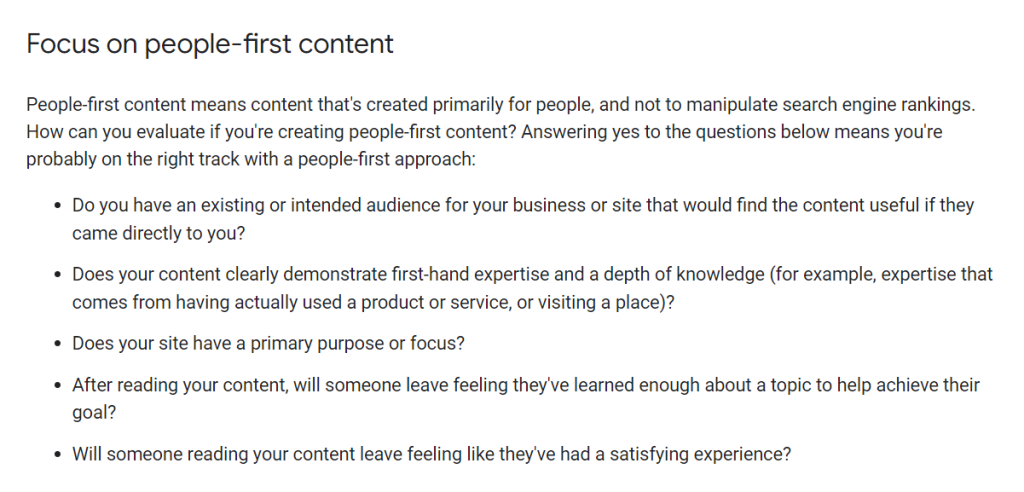
Use keyword clusters to categorize these keywords based on intent. This way, you can cover multiple related topics and strengthen topical authority. Third-party SEO tools like Ahrefs and SEMrush help you do this:
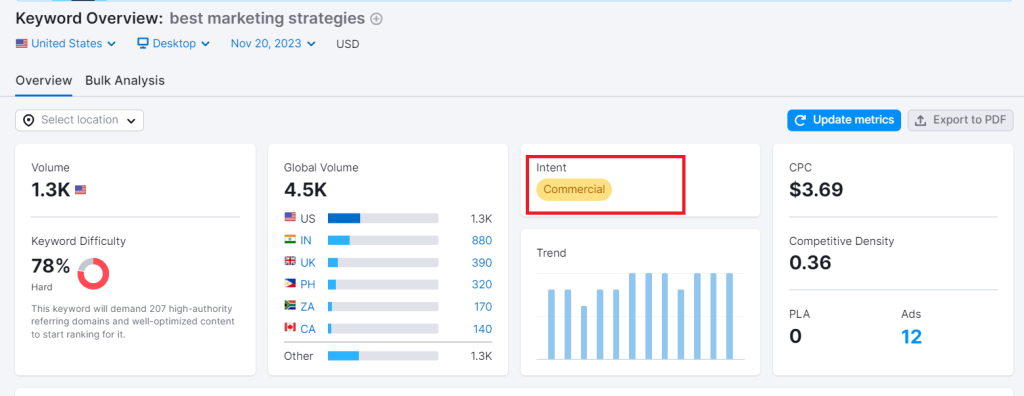
Read more on how to target keywords with buyer intent.
ii. Optimize your title tags and description
Your title tag and meta description don’t influence rankings, but they influence your organic click-through rates. They tell users and search engines what your page is about.

If you’ve been creating high-quality content or ranking in the top spot for your primary keywords but not getting clicks to your site, it could be that your metadata isn’t well optimized.
What to do:
Use SEMRush on-page SEO checker to analyze your current meta descriptions to see if they’re well optimized:
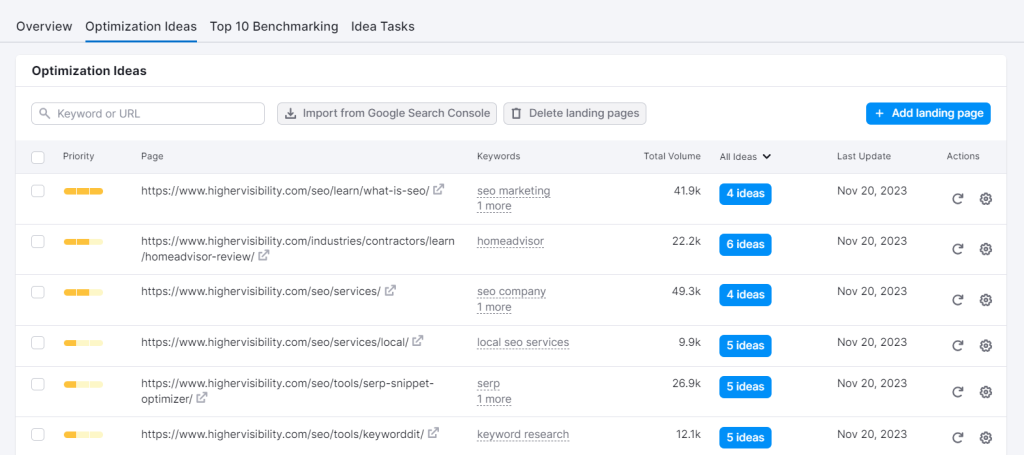
You’ll get results like this:
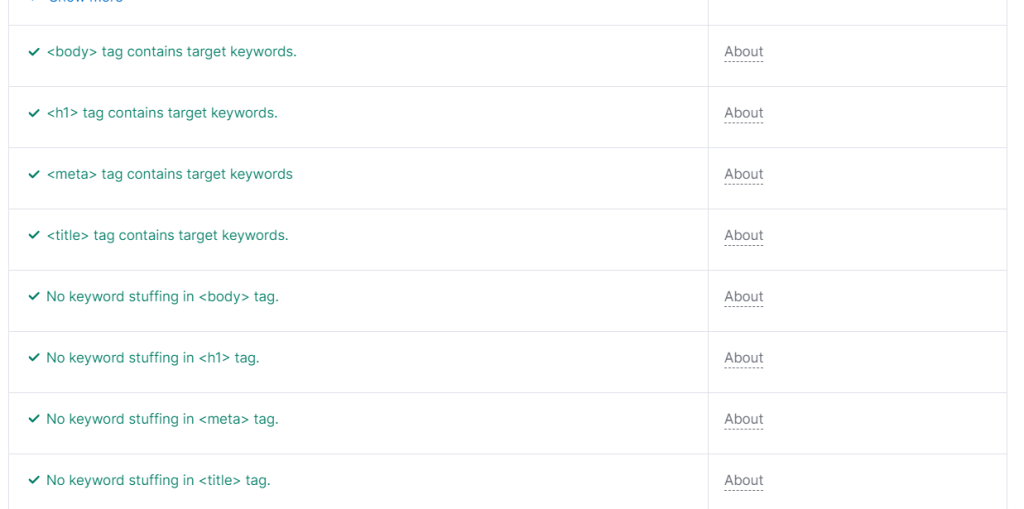
Other best practices are:
- Match search intent.
- Avoid keyword stuffing. Use the primary keyword in your metadata.
- Keep your meta descriptions under 120 characters and your meta titles under 60.
- Make them descriptive, concise, and engaging to encourage users to click through.
iii. Optimize header tags to improve page structure
Header tags are used to organize your website structure. It helps search engine crawlers and web users navigate your website easily. Ideally, your headers should be structured like this:

What to do:
i. Improve user engagement
User engagement metrics are the best way to understand how users interact with your website. They include bounce rate, retention rate, time on page, etc.
For instance, a high bounce rate means you need to improve the quality of your content, optimize your page speed, or improve your overall page user experience.
Search engines also track them to gauge if your website provides an enjoyable search experience for searchers.
What to do:
Use Google Analytics or third-party SEO tools to audit your website. Check the user engagement section to know which page:
- Has the highest user engagement and why. Check out the time on page, scroll depth, or social shares. Does it solve a specific problem or rank for a high-intent keyword? Double down on the strengths to find what you can replicate across other pages.
- Receives the lowest clicks or traffic. Do they have (or do not have) internal links? Does the content match the user’s search intent?
- Drives the most conversions. Look at goal completions and what’s working. This can be strong CTAs, testimonials, quality copy, etc.
- Loses users the fastest. Check out the bounce rates and exit pages. If users leave quickly, it may be that your webpage is slow, irrelevant to their search intent, or that the competition provides a better search experience.
This data will inform your subsequent SEO campaigns for better results.
To improve user engagement on your website:
- Use tools like HotJar to understand user engagement on your website. For example, the session mapping feature records how users interact with your website, the pages they click on, and where they drop off. This data can help inform your next steps.
- Publish high-quality content that caters to user search intent.
- Use clear calls to action to encourage click-throughs.
- Refresh old content. Add new perspectives—this can be quotes from a thought leader or video tutorials—to help visitors better understand your content.
- Use internal linking to distribute link juice across pages and improve how search engine bots crawl your site.
4. You ignored off-page SEO
Off-page SEO focuses on everything “outside” your website pages to improve its search performance. Here are some key areas to focus on:
i. Backlink profile:
Backlinks are votes of confidence from other websites to show that your content is trustworthy and valuable. However, not all links are equal.
A backlink filled with low-quality, spammy, or irrelevant links affects your SEO and causes search engines to tank your rankings. And if you’re not getting any backlinks, it’s a clear sign that your website content isn’t valuable enough.
Look out for backlinks that are:
- Relevant to your industry. For instance, if you’re in the manufacturing industry, backlinks from other websites in the manufacturing niche hold more value than links from a fintech website.
- Authoritative. The sites should have high domain authority, as Google views these links as ‘votes of credibility’ to your site. So, the more authoritative links you get, the better.
- Natural. Earned links are more valuable than those acquired by unethical means or link exchanges.
What to do:
Analyze the quality of sites linking to your site using SEMRush or Ahrefs.
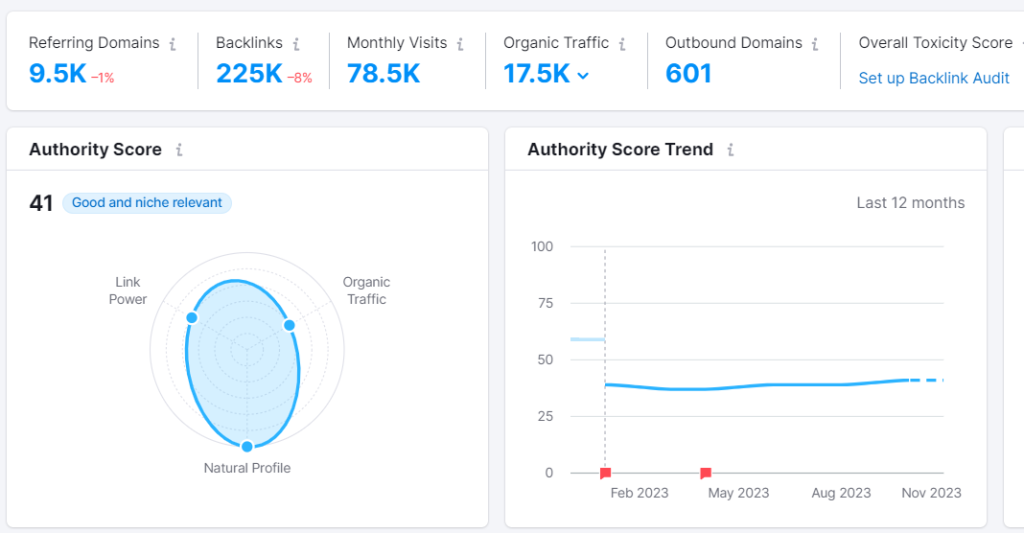
Check out the anchor text to ensure it’s relevant to your website’s content:
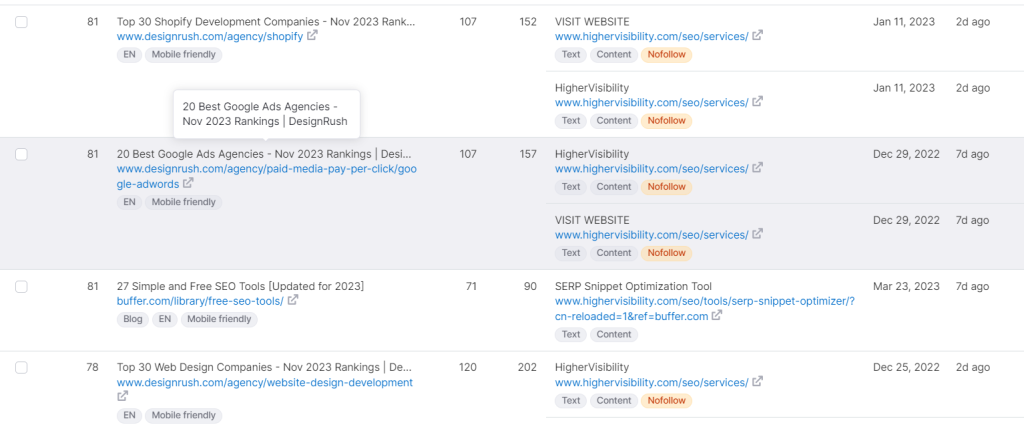
If you find spammy or low-quality backlinks, disavow them using Google’s disavow tool or contact the affected sites to request link removal.
Next, go to your GSC account and click “Security and manual actions >> Manual actions” to be sure your website is free from penalties:
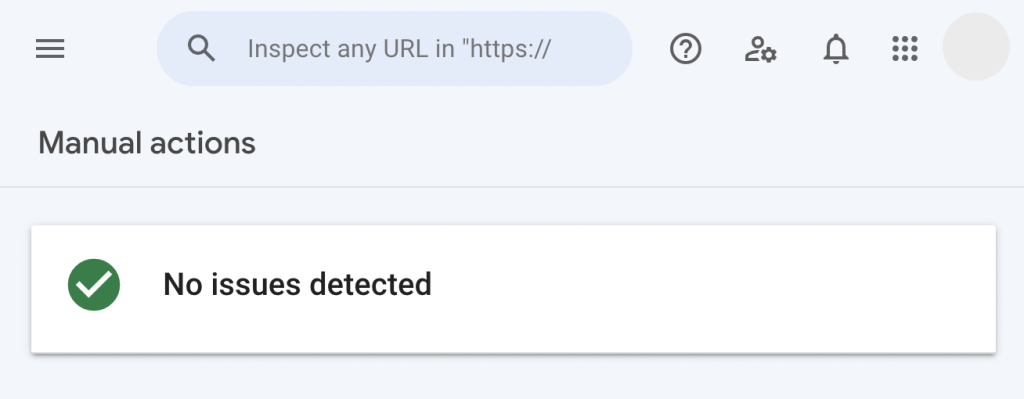
ii. Optimize for local keywords
If your website is optimized for local SEO, especially if you serve a local audience, you can attract high-value traffic. According to research, 76% of people searching for a service via smartphones visit a business within a day.
When this happens, you want to ensure your website appears at the top of the pack.
What to do:
- Claim and verify your Google Business Profile if you haven’t.
- Ensure your information is accurate and consistent across all other platforms, including your website and online directories.
- Optimize your business on local listings and directories in your area for referral traffic.
- Encourage customers to leave reviews on your GBP and respond to all, including negative reviews.
- Use location-specific keywords in your content and service pages—for example, Bridal shop in Nashville, Tennessee.
- Use local schema markup to help search engines understand your website content and rank it for rich snippets.
Read more on how to rank for the local map pack.
5. You’re targeting the wrong keywords
You can’t get anything from SEO without a solid keyword strategy. Or at least a strategy for choosing the topics you write about. Here’s what I mean:
Many business owners target keywords with high search volume. While this is tempting, it can be a trap if the keywords don’t align with user search intent or broader business goals.
For example, if you run a small bakery in downtown Abbey, ranking for “bakery shop” will mainly attract generic traffic. The only way to attract traffic for your specific audience is by using location-specific keywords.
What to do:
Run a keyword audit for your website. Check if your content ranks for the right keyword, aligns with user search intent, and is in line with broad business goals. SEO tools like SEMrush can help you categorize the keywords based on search intent:
- Commercial,
- Navigational,
- Transactional, and
- Informational.
This will help you target keywords and create content based on the user journey.
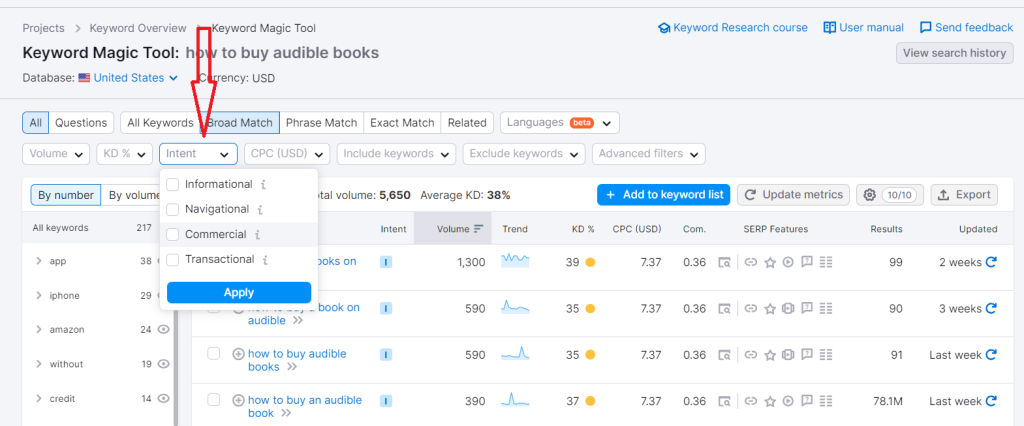
Also, if you want to increase conversions, target long-tail keywords. These keywords have a small search volume but are highly targeted and will funnel buyer-intent traffic to your website:
6. Not following a data-backed approach
Your SEO isn’t complete without proper monitoring. You need to analyze your data to know the strengths and weaknesses of your existing strategy. This helps you know when to pivot to another tactic (especially after a Google update) or whether your website is safe.
What to do:
Set key performance indicators (KPIs) that align with business goals. For example, if you plan to increase sales by 40% in the first half of the year, your SEO should focus on attracting relevant traffic and increasing conversions. You’ll also want to track metrics within these areas.
Tools like Google Analytics, Search Console, or Ahrefs can help to monitor your search performance.
Here, you can:
- Track how long visitors stay on your site and what they click or engage with while on your site.
- Track the performance of your content.
- Use a custom dashboard to segment organic traffic (filtering the sheep from the wolves).
- Analyze page impressions.
- View your landing page report.
- Find low-hanging opportunities to increase traffic.
- Set up alerts and monitoring for 404 pages.
Stay Abreast of SEO Trends
SEO changes every year. Recently, we’ve seen the impact of LLMs (large language models) like ChatGPT on search behavior. Solely optimizing for Google lets you miss out on the traffic using these AI-powered search engines. So, what can you do?
- Write in a way that your typical target audience will search for a topic on LLMs. This means integrating regular phrases in your articles.
- Focus on long-form, authoritative content and avoid keyword-stuffing.
- Structure your content so AI tools can understand it (and send referral traffic to your website). Start by using clear headings and being explicit in your content.
Also, voice and image searches are becoming more popular. Research shows that 30% of internet users use voice assistants every week:
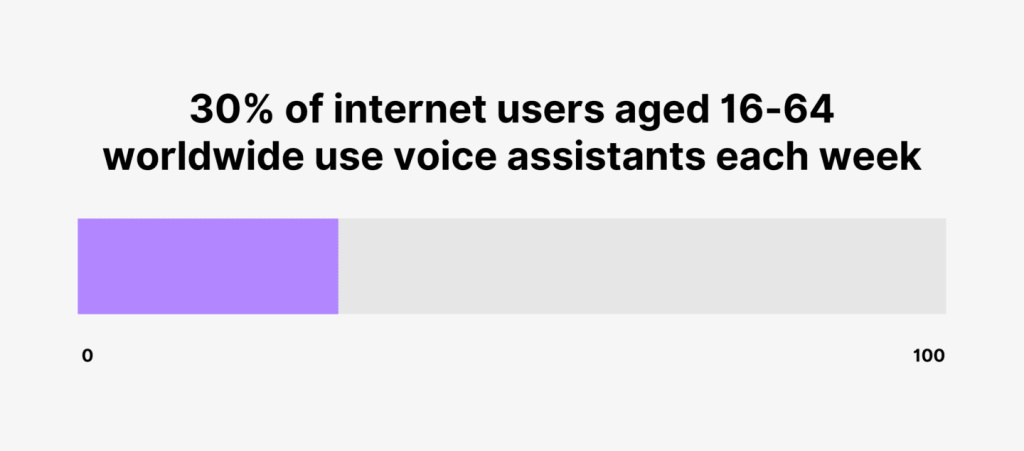
You can follow these tips to optimize for voice search.
7. Unrealistic Expectations And Impatience
While adapting your SEO strategy is essential, be careful not to misinterpret the algorithm updates. Algorithm updates are steps to improve the user search experience. Your website will likely not be affected if you’re already doing this.
Before you make changes to your website based on an update, do these:
First, go through each update in detail to determine the implications for your website. If the new update didn’t affect your rankings, you don’t need to change anything about your strategy.
But if it does, pivot your tactic to align with Google’s SEO guidelines. Also, avoid black or gray hat tactics such as cloaking, keyword stuffing, purchasing links, etc. Instead, adopt ethical, white hat practices that guarantee long-term returns.
Lastly, …
8. Ignoring your competitor’s SEO strategies
Another mistake businesses make is not considering the competition in their industry.
Sometimes, you may not get results from your SEO because your competitors have been in the industry for much longer and have built more authority than you.
For example, if you’re trying to rank for “best running shoes”, you’ll compete with major brands like Nike, Adidas, New Balance, and even Amazon, which have decades of authority in this niche. Without a well-planned SEO approach, outranking these websites is nearly impossible.
Another use case to consider is their investment. If you invest $1000 in SEO and your competitors spend $5000, your outcomes won’t be the same. Remember that SEO is an investment, and a higher investment often translates to better results.
What to do:
First, list your direct competitors – companies selling similar products or services and organic competitors – websites targeting similar keywords. You can use SEMrush Organic Research Tool for this:

Next, conduct a competitor analysis to learn more about their SEO strategy. What are their target keywords? How’s their content structured? Are there gaps in their strategy that you can mirror in yours? This gives you an idea of:
- What’s already working?
- Gaps in their strategy that you can edge on.
Use this data to improve your SEO. For example, if they create long-form content on a trending topic, tackle that same topic from another angle, and optimize it for more keywords.
You can also use the Skyscraper technique to increase the topical authority of long-form content and its ranking potential. Learn more about the Skyscraper technique, and read more on how to improve your SEO through competitor analysis.
Conclusion
Nothing is more frustrating than seeing your competitors outperform you on search. With the strategies outlined above, you’ll see an improvement in your search performance—whether in traffic, conversions, or rankings. However, if you’re tired of the DIY process or you’ve tried everything and are still not getting results, schedule a free consultation with any of our experts for a customized SEO strategy.
Nothing is more frustrating than seeing your competitors get all the traffic and rankings and you get trickles. It’s like losing all your candies to them.
However the strategies outlined above give you a head start in resolving your SEO issues, increasing your traffic, and generating other desired conversions.
If you’re tired of the DIY process or you’ve tried all and are still not getting the results, maybe it’s time to partner with an agency like HigherVisibility with a proven track record of success. Schedule time for a free no no-obligation strategy call today!
